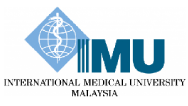The anatomy of anatomy
Author: John Paul Judson
ABSTRACT
The relationship between anatomy and surgery has been historic and epic, spanning many centuries, complementing each other in medical education and being independent as well as interdependent in many ways. However, curricular changes that have happened globally in recent years with the introduction of several contemporary styles of medical teaching have subtly downplayed the importance of anatomy in medicine, allowing young doctors with poor knowledge of anatomy to become surgeons. With a whimsical introduction that metaphorically hints at the strained relationship that exists between anatomy and surgery, the article attempts to explore the ‘anatomy’ of anatomy itself, examining its origins in recorded ancient history, evolution along the centuries in tandem with surgery and its current status in medical education.
Keywords: Anatomy, surgery, medical education, curriculum, history of medicine.
Citation: IeJSME 2012: 6 (Suppl 1): S48-52

